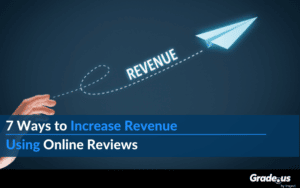Loyalty programs have come a long way since the original Sperry & Hutchinson Green Stamp Program in 1986. The philosophy behind a loyalty program essentially centers around rewarding customers for simply being customers. By providing our loyal customers with rewards for engaging and purchasing from our business, we are incentivizing them to continue to buy from us, beyond the value of our products and services.
While 87% of consumers want a customer loyalty program, according to Entrepreneur, 77% of loyalty programs that focus on awards alone are failing within the first two years.
When executed correctly, Loyalty Programs offer incredible value to small businesses. Yet, only 34% of SMBs have a loyalty program.
Let’s explore:
- 3 Example Loyalty Programs
- The Value For Small Business
- Why Loyalty Programs Fail
- 5 Loyalty Program Management Software Options
3 Examples of Quality Loyalty Programs
While many loyalty programs fail, there are some amazing companies doing innovative things to impress, reward, and engage their customers.
Starbucks
Starbucks uses a point system with a Gold level tier, providing drink and food discounts, birthday rewards and free drinks earned with points. Not that you need it, since you can use the Starbucks app, but you also receive a personalized Gold Card.
Sephora also has a few tiers in their program based on money spent. Their rewards include free beauty samples, invites to exclusive events, and even beauty classes.
BestBuy also has a tiered program and provides point-earned discounts, exclusive sales, and free shipping.
The Value for Small Business
Loyalty programs are ripe with value for small businesses. They offer a variety of benefits to the business when executed correctly.
The purpose of a loyalty program is to keep existing customers happy and bring on new ones, which address the leading business concerns among US small business owners: finding new customers (66%) & retaining existing customers (40%).
Including customer acquisition and retention, here are some of the key benefits of crafting and sustaining a quality loyalty program.
They Help Businesses Retain Customers
A loyalty program can introduce a personal connection between a consumer and a business. When we tap into loyalty channels by offering incentives to engage with our company, we’re increasing the positive experiences our customers are having with us.
How does this help the bottom line?
Interesting. So the people who are a part of our loyalty program are more likely to continue to do business with us. But the financial benefits of loyalty programs are more pronounced with repeat customers.
If you subscribe to the Pareto Principle where 80% of our sales come from 20% of our customers, then taking great care of them via our loyalty program becomes paramount.
Note:
Financial benefits aren’t the only goal of a loyalty program or necessarily the most important. For a given business, the primary goal may be differentiation from competitors, long-term customer retention, or just old-fashioned satisfying and delighting customers.Delighted customers
For those of us that invest in our customer service, loyalty programs offer a variety of ways to deliver a special experience. The kind of creative experience that can wow a customer. A birthday email, stuffed with a special discount or a free reward, packs an emotional punch for people. It makes us feel special.
Have you ever seen a business owner read a happy customer’s review? Their eyes light up. We like to make our customers happy. These moments facilitated with the loyalty program are easier to deliver now.
Brand Engagement
Sometimes people don’t know that our social media teams are there for them, building a community. Through loyalty programs, we can incentivize certain behaviors by our members which might increase engagement. We can provide points for filling out profile information, performing an action on Facebook or Twitter, or for being an ambassador for the brand.

Referrals
Happy customers are truly a boon to business, aren’t they?
They’re spending more money with us, and more often. They’re engaging with us in satisfying and useful ways. As it turns out, they’re spreading the word.

When your customers are loving your company, they want to share it with the world. Including a referral incentive adds new customers while rewarding existing customers at the same time.
Loyalty Programs also provide an opportunity to ask for online reviews! Most of your members joined because they love you, help them share their love to complete strangers.
Customer Insights
Loyalty programs can motivate members to share information that helps us give them a better customer experience and improve our own products and services. Tracking purchases through the program can also help marketing personalize promotion campaigns tailored to individual members.
Being able to know who our top customers are seems pretty important, and many Loyalty Program platforms can help us learn who they are.
Communication Channels for Marketing Campaigns
Those customer insights can help us craft effective email campaigns. Nobody wants to be bombarded by promotional emails, but earning permission to send more frequent communications can result in more ROI via emails.
But don’t over do it. Too many emails will devalue the membership experience.
Why Loyalty Programs Fail
89% of people on social media are not fans of loyalty programs. The reason for that many businesses still use inconvenient, complicated and deceitful mechanisms to keep their loyalty programs running. When we create our program, we’ll want to avoid these pitfalls.
Too Many Hurdles and Too Complicated
We’ve all experienced painful signups for membership programs. A long form asking for a little too much of our private information. Buy us dinner first?
We need to keep our loyalty programs as simple as possible. If members need to remember to have their plastic card with them, that’s a hurdle. If it’s difficult to redeem your points, that’s a hurdle. Some programs automatically apply discounts to our purchases without us having to let them know we have earned them. Doesn’t that make things easier and take the responsibility off of the member?
Not Transparent
If your members are invested in your loyalty program, they need transparency. They need to be able to know what they can earn, when they can earn it, and if it expires. The worst thing we can do with our loyalty program is to change the rules on our customers in a way that feels unfair. Remember that any changes we make to the program has to look fair in the eyes of the member. When our members feel deceived, not only will they leave us, but they will not have positive things to say in their reviews and when they talk to friends.
Loyalty Program Vendors
Loyalty Program Platforms are becoming a very competitive field, with new players emerging every day.
When it comes to choosing the right software for a business, check out Capterra and G2 Crowd to do research. Their communities are insightful and honest about their experiences.
G2 Crowd Loyalty Program Software Reviews
Capterra Loyalty Program Software Reviews
A few recommended options worth looking into as well:
Belly
Takeaways
Loyalty programs provide a great marketing opportunity to delight our customers and find new ones. With new platforms emerging, it’s never been easier for a small business to create their own program. In order to benefit from these platforms though, we need to be committed, and put the customer first. We need to provide a painless experience that has worthwhile rewards. If we continue to add positive experiences for our customers, their lifetime value to our business will increase, and our bottom line will grow.
About the Author
Garrett Sussman
Garrett is the Head of Marketing at Grade.us, an online review management and marketing platform. When he's not crafting content, he's scouting the perfect ice coffee, devouring the newest graphic novels, and concocting a new recipe in the kitchen.























